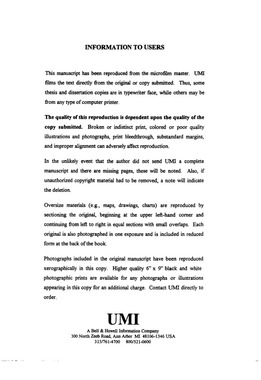| dc.contributor.advisor | Fleener, Jayne, | en_US |
| dc.contributor.author | Montis, Kristine Kowitz. | en_US |
| dc.date.accessioned | 2013-08-16T12:29:49Z | |
| dc.date.available | 2013-08-16T12:29:49Z | |
| dc.date.issued | 1997 | en_US |
| dc.identifier.uri | https://hdl.handle.net/11244/5516 | |
| dc.description.abstract | The results of this study substantiated aspects of the learning theories which were applied. It was observed, however, that classroom instruction was in many instances not consistent with such theories and in these cases Kay's learning difficulties were acerbated. Grounding of these theories in the exceptional case resulted not so much in revising the individual theories, but in highlighting the desirability of using multiple approaches. | en_US |
| dc.description.abstract | This case study identified and described the impact of learning difficulties on the life-experiences of a 12 year old student named Kay. The study proceeded with an analysis of how Kay makes sense of her world and copes with her learning difficulties, particularly in the areas of mathematics and reading. Then constructivist, developmental, cognitive, and language/cultural learning theories were examined for elements which might be expected to positively impact Kay's learning process. The identified elements were implemented in an action research design using an intervention protocol during tutoring sessions over the 1996-97 school year. | en_US |
| dc.description.abstract | The implications of this study include issues about (1) assumptions about common cultural experiences which are erroneous and therefore hinder the learning process, (2) the continuing disparity between what is known about learning and what actually takes place in classroom practice and (3) making mathematics accessible to students with learning difficulties. | en_US |
| dc.description.abstract | In terms of school grades the four most dramatic observed changes were associated with (1) Explicit Instruction in Study Skills, (2) Memory Load Reduction, (3) Proactive Teaching, and (4) Pair-Reading with Discussion. Underlying the success of these interventions was the use of The Clinical Interview which aided in first understanding Kay's thought processes and then identifying appropriate interventions. | en_US |
| dc.description.abstract | The results of this study centered around the ten types of interventions which were tried. In chronological order of when they were applied in this study, the ten interventions were: (1) Corrective Feedback; (2) The Clinical Interview; (3) Use of Visual Aids; (4) Pair-Reading with Discussion after Each Paragraph; (5) Use of Manipulatives; (6) Memory Load Reduction; (7) Proactive Teaching; (8) Metacognitive Strategies; (9) Calculators and Reference Charts; (10) Explicit Instruction in Study Skills. | en_US |
| dc.format.extent | xii, 159 leaves : | en_US |
| dc.subject | Education, Reading. | en_US |
| dc.subject | Learning disabled children Education Case studies. | en_US |
| dc.subject | Education, Educational Psychology. | en_US |
| dc.subject | Reading Study and teaching Case studies. | en_US |
| dc.subject | Mathematics Study and teaching Case studies. | en_US |
| dc.subject | Education, Mathematics. | en_US |
| dc.title | Kay : | en_US |
| dc.type | Thesis | en_US |
| dc.thesis.degree | Ph.D. | en_US |
| dc.thesis.degreeDiscipline | Department of Instructional Leadership and Academic Curriculum | en_US |
| dc.note | Source: Dissertation Abstracts International, Volume: 58-05, Section: A, page: 1585. | en_US |
| dc.note | Major Professor: Jayne Fleener. | en_US |
| ou.identifier | (UMI)AAI9733892 | en_US |
| ou.group | Jeannine Rainbolt College of Education::Department of Instructional Leadership and Academic Curriculum | |
